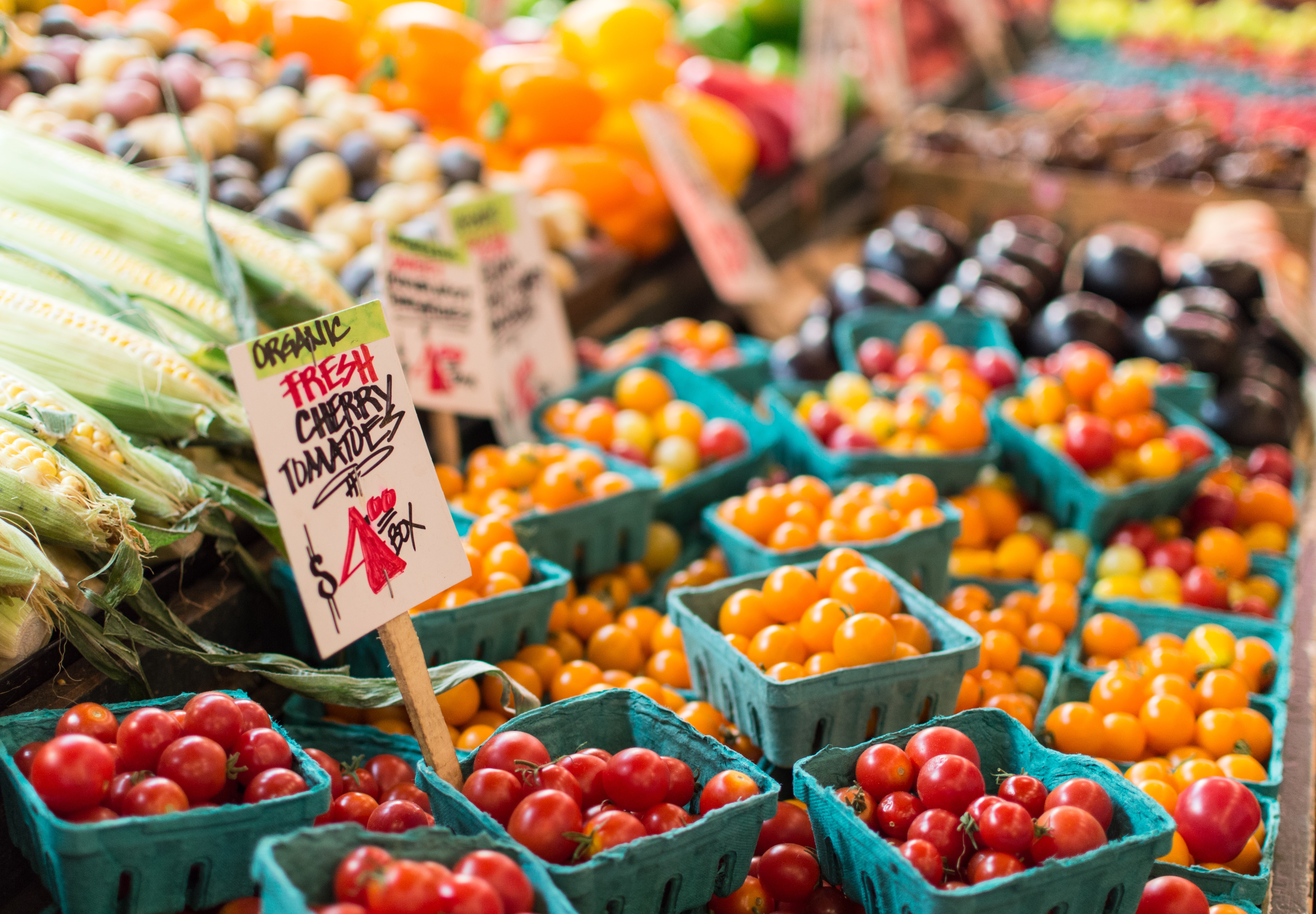




Try superfoods from all seasons, such as spring asparagus.
Those slender sticks of green goodness are a spring favorite, so you’ll find them priced reasonably during that time. How do you fix asparagus? That’s the good news, they’re versatile. You can grill them, saute them or even steam them. You can top a salad with grilled asparagus and shrimp for a great treat everyone will love. Asparagus is lower in calories and high in folate, vitamins A, C, and K, and fiber. Eating more asparagus can help you improve your blood pressure, lose weight and help your digestion.
Summer is a paradise for healthy eaters.
If you live anywhere but in a big city, you’re bound to find roadside stands that sell fresh fruit and vegetables, often at a far cheaper price. Tomatoes abound in the summer and taste so much better than store bought ones during the winter months that are picked before they ripen and shipped. You can substitute pasta with sliced eggplant or zucchini noodles. Both add more nutrition. Speaking of substitutions, try spaghetti squash for a change of pace. Make fresh sauce with tomatoes, peppers and onions and then drizzle it over the noodles for a delicious alternative that’s high in nutrition and low in calories.
Fall brings in even more options.
As tomato season ends, root crops are abundant. Fall and cooler weather also increases opportunities for fresh leaf lettuce and kale. Sweet potatoes, one of the fall root crops, provide fiber to support healthy gut bacteria and extra antioxidants. They have cancer-fighting properties, plus can help brain function and are great for managing blood sugar levels. They support your immune system and enhance brain functioning. Cabbage, another fall crop, and carrots, also are high in nutrition and lower in calories.
- Buy extra for freezing, drying or canning. If you want an easy way to freeze tomatoes, simply wash thoroughly, cut out the stem and freeze. When you’re ready to use, run the tomato under warm water and the skin slides off easily.
- Using beets is easy. Just scrub the outside and clip the long leafy stems down to an inch or two. Steam them and when cooked, run them under cold water, sliding off the skin and rest of the stem. They’re ready to eat.
- Adding herbs adds flavor and nutrition without adding extra calories. You can use an ice cube tray to make it easier to keep them. Stuff each section of the tray with herbs and run a thin film of water to cover. Freeze. Pack the frozen herb cubes into zip lock bags to use later.
For more information, contact us today at Travel Trim
